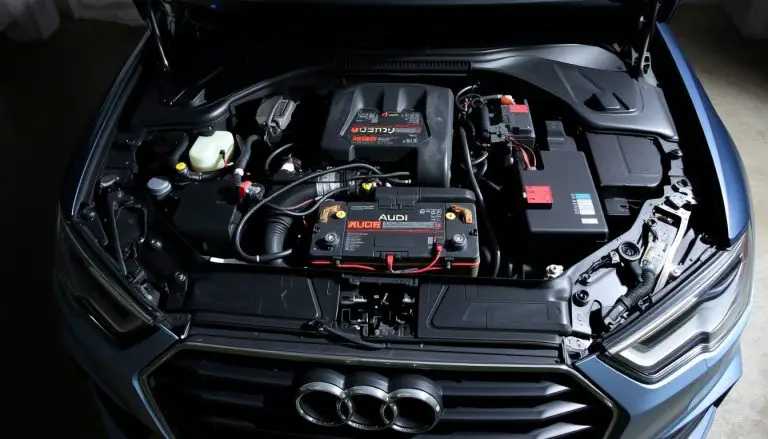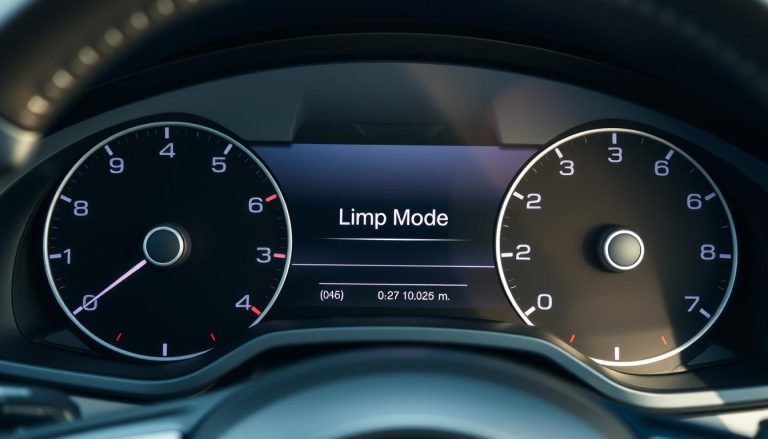Replacing the battery in your Audi can be a straightforward process, but it may require additional steps to reset the vehicle’s systems. Failing to do so can result in malfunctioning features and decreased performance. In this guide, we will walk you through the importance of resetting your Audi after battery replacement and provide a step-by-step guide on how to do it.
Resetting your Audi‘s systems after a battery replacement is crucial to ensure that all features function properly. For instance, you may need to reset the MMI system, which can be done by disconnecting the battery, as explained in this guide on resetting the Audi MMI system.
Key Takeaways
- Resetting your Audi’s systems is crucial after battery replacement.
- The process involves disconnecting the battery and rebooting the system.
- Resetting the MMI system is also necessary for proper functionality.
- Follow the step-by-step guide to ensure a successful reset.
- Proper resetting ensures all features function as intended.
Why You Need to Reset Your Audi After Battery Replacement
Replacing the battery in your Audi is more than just swapping out the old for the new; it requires a crucial reset to ensure all systems function properly. Modern vehicles, especially Audis, rely heavily on sophisticated electronic systems that can be disrupted by a battery replacement.
Electronic Systems in Modern Audis
Modern Audis are equipped with advanced electronic systems, including infotainment, navigation, and driver assistance systems. These systems are controlled by complex computer modules that need to be recalibrated after a battery replacement. The Audi electronic systems are designed to provide a seamless driving experience, but they can be affected by the loss of power during a battery swap.
Potential Issues When Skipping the Reset Process
If you skip the reset process after replacing your Audi’s battery, you may encounter several issues. These can include malfunctioning infotainment systems, incorrect dashboard readings, and even problems with safety features like airbags and anti-lock brakes. For more detailed guidance on resetting your Audi’s computer, you can refer to this step-by-step guide. Skipping the reset can lead to Audi troubleshooting becoming a regular task, which can be time-consuming and frustrating.
Resetting your Audi after a battery replacement is essential to ensure that all systems are functioning correctly and safely. It’s a simple process that can save you from potential headaches down the road.
Preparing for the Reset Process
To ensure a smooth Audi reset process, preparation is key. Proper preparation not only makes the process easier but also helps in avoiding potential complications that might arise during or after the reset.
Tools and Equipment Needed
Having the right tools and equipment is crucial for a successful Audi reset procedure. You’ll need an Audi diagnostic tool, such as an OBD-II scanner, to communicate with your vehicle’s onboard computer. Additionally, ensure you have a stable power source for your diagnostic equipment and a comfortable working environment.
| Tool/Equipment | Purpose |
|---|---|
| Audi Diagnostic Tool (OBD-II Scanner) | Communicates with the vehicle’s onboard computer |
| Stable Power Source | Prevents interruptions during the reset process |
Safety Precautions Before Starting
Before initiating the Audi reset procedure, take necessary safety precautions. Ensure your vehicle is parked on a level surface and apply the parking brake. It’s also advisable to consult your owner’s manual or a professional if you’re unsure about any part of the process.
- Park your vehicle on a level surface
- Apply the parking brake
- Consult the owner’s manual or a professional if unsure
How to Reset Audi After Battery Replacement
Understanding how to reset your Audi after a battery change is vital for the longevity and optimal performance of your vehicle. This process involves several steps that help recalibrate the various electronic systems in your Audi.
Basic Reset Procedure for All Audi Models
The basic reset procedure is applicable to all Audi models and involves a series of steps that help restore the vehicle’s systems to their default settings.
- Turn off the ignition and remove the key from the ignition switch.
- Disconnect the battery negative cable and wait for at least 30 minutes.
- Reconnect the battery negative cable and turn on the ignition.
- Allow the vehicle to remain in the “ON” position for a few minutes to allow the systems to recalibrate.
Model-Specific Reset Instructions
While the basic reset procedure applies to all Audi models, some models have specific requirements. Here are the reset instructions for different Audi series:
A3, A4, and A5 Series Reset
For A3, A4, and A5 series Audi models, the reset process involves additional steps to recalibrate the infotainment and navigation systems.
- Press and hold the “SETUP” button on the infotainment system.
- Navigate to the “System” menu and select “Reset.”
- Follow the on-screen instructions to complete the reset process.
A6, A7, and A8 Series Reset
A6, A7, and A8 series Audi models require a slightly different reset procedure, focusing on the advanced driver assistance systems.
- Access the “Driver Assistance” menu on the infotainment system.
- Select “Adaptive Cruise Control” and reset the system.
- Follow the prompts to recalibrate the camera and radar sensors.
Q Series and SUV Reset Procedures
For Q series and SUV models, the reset process involves recalibrating the suspension and stability control systems.
| Step | Description |
|---|---|
| 1 | Navigate to the “Vehicle Settings” menu on the infotainment system. |
| 2 | Select “Suspension” and reset the system. |
| 3 | Follow the on-screen instructions to complete the reset process. |
Using Diagnostic Tools for Reset
Diagnostic tools play a crucial role in resetting Audi systems, especially when dealing with complex electronic control units (ECUs).

Using a diagnostic tool like ODIS or VCDS, you can access the vehicle’s ECU and perform a comprehensive reset.
- Connect the diagnostic tool to the vehicle’s OBD-II port.
- Follow the tool’s instructions to access the ECU and perform the reset.
Specific Systems That Require Reset Audi After Battery Replacement
When you replace your Audi’s battery, it’s essential to reset certain systems for optimal performance. Modern Audis rely heavily on sophisticated electronic systems, and a battery replacement can sometimes disrupt their functionality. In this section, we’ll explore the specific systems that may require a reset after a battery replacement.
Window and Sunroof Calibration
One of the critical systems that may need recalibration is the window and sunroof mechanism. After a battery replacement, these systems might not operate correctly until they are reset. To calibrate, you typically need to fully open and then fully close the windows and sunroof, repeating this process a few times to ensure they are properly synchronized.
Memory Seat and Mirror Reset
Audi models with memory seats and mirrors may lose their settings after a battery replacement. To reset these, you’ll need to reprogram the seat and mirror positions. This usually involves adjusting the seats and mirrors to your preferred settings and then saving these settings using the designated buttons on the door panel.

Infotainment and Navigation System Reset
The infotainment and navigation system in your Audi may also require a reset after a battery replacement. This can often be done by restarting the system or, in some cases, by using a specific reset procedure outlined in your owner’s manual. Ensuring your navigation maps and other infotainment features are up-to-date is crucial for a seamless driving experience.
By resetting these critical systems, you can ensure your Audi operates smoothly and efficiently after a battery replacement. Always refer to your owner’s manual for specific instructions on how to reset these systems for your particular Audi model.
Troubleshooting Common Reset Issues
Troubleshooting is an essential step if you encounter problems after resetting your Audi’s systems post-battery replacement. Despite following the reset procedures, some issues may still arise, requiring further attention.
Error Messages and Warning Lights
If you notice error messages or warning lights on your dashboard after a reset, it’s crucial to address them promptly. These could be related to systems that weren’t properly reset or other underlying issues. Check your owner’s manual or consult with a professional if you’re unsure about the meaning of these warnings.
Systems That May Need Manual Recalibration
Some systems in your Audi, such as the window and sunroof mechanisms, may require manual recalibration after a reset. This process can vary depending on the model and year of your vehicle. Refer to your owner’s manual for specific instructions or seek assistance from an Audi dealership.
When to Seek Professional Help
If you’re unable to resolve the issues on your own, it’s time to seek professional help. Complex problems may require the use of Audi diagnostic tools, which are typically available at authorized Audi service centers. Don’t hesitate to consult a professional if you’re faced with persistent error messages or if your Audi’s systems aren’t functioning correctly.
| Issue | Possible Cause | Solution |
|---|---|---|
| Error Messages | Systems not properly reset | Check owner’s manual or consult a professional |
| Warning Lights | Underlying issues | Consult an Audi dealership or service center |
| Systems malfunctioning | Need for manual recalibration | Refer to owner’s manual or seek professional help |
“The key to resolving issues after an Audi battery replacement is patience and a systematic approach to troubleshooting. Don’t rush the process, and don’t hesitate to seek help when needed.”
Resetting Your Audi: The Final Step
Properly resetting your Audi after battery replacement is crucial to ensure all systems function as intended. By following the step-by-step guide outlined in the previous sections, you can avoid potential issues and maintain your vehicle’s performance.
Resetting your Audi involves more than just replacing the battery. It requires recalibrating various systems, including window and sunroof calibration, memory seat and mirror reset, and infotainment and navigation system reset. Using the right tools and following the correct procedures is essential to complete the process successfully.
After completing the reset process, your Audi should be functioning correctly. If you encounter any issues, refer to the troubleshooting section for guidance. For complex problems, it’s recommended to seek professional help from an authorized Audi service center.
By taking the time to properly reset your Audi after battery replacement, you can enjoy a seamless driving experience and maintain your vehicle’s overall health. Whether you’re a seasoned DIY enthusiast or a new Audi owner, following these guidelines will help you navigate the process with confidence.
FAQ
What is the purpose of resetting an Audi after battery replacement?
Resetting an Audi after battery replacement is crucial to recalibrate the vehicle’s sophisticated electronic systems, ensuring they function correctly and preventing potential issues such as malfunctioning systems or error messages.
What are the potential issues if I skip the reset process after replacing my Audi’s battery?
Skipping the reset process can lead to malfunctioning systems, error messages, and warning lights on your dashboard. It may also cause issues with window and sunroof calibration, memory seat and mirror settings, and infotainment and navigation system functionality.
What tools and equipment do I need to reset my Audi after battery replacement?
The necessary tools and equipment may vary depending on the Audi model, but typically include a diagnostic tool, a reset cable, or a specialized scanner. It’s essential to consult your owner’s manual or a professional mechanic to determine the required tools.
How do I reset the window and sunroof calibration on my Audi?
To reset the window and sunroof calibration, you typically need to fully open and then close the windows and sunroof, and then perform a calibration procedure using the vehicle’s infotainment system or a diagnostic tool. Consult your owner’s manual or a professional mechanic for specific instructions.
Can I reset my Audi’s infotainment and navigation system myself?
Yes, you can reset your Audi’s infotainment and navigation system by accessing the system’s settings menu and selecting the reset or restart option. However, if you’re unsure or experience issues, it’s recommended to consult a professional mechanic or an authorized Audi dealership.
What should I do if I encounter error messages or warning lights after resetting my Audi?
If you encounter error messages or warning lights after resetting your Audi, try restarting the vehicle or consulting the owner’s manual for troubleshooting guidance. If the issue persists, it’s recommended to seek professional help from an authorized Audi dealership or a qualified mechanic.
Are there any specific reset procedures for different Audi models?
Yes, different Audi models may require specific reset procedures. For example, the A3, A4, and A5 series may require a different reset procedure than the A6, A7, and A8 series. Consult your owner’s manual or a professional mechanic for model-specific instructions.
Can I use a third-party diagnostic tool to reset my Audi?
While some third-party diagnostic tools may be compatible with Audi vehicles, it’s recommended to use an authorized Audi diagnostic tool or consult a professional mechanic to ensure the reset process is done correctly and safely.


